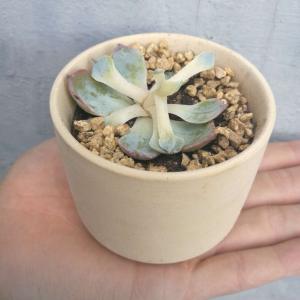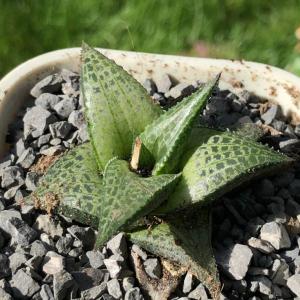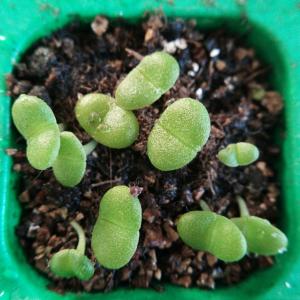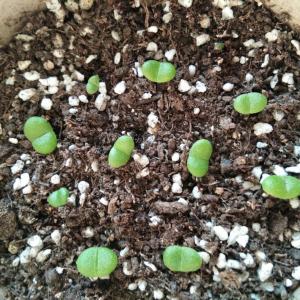文章
Miss Chen
2018年05月24日

Description: This perennial wildflower is 2-3' tall and usually unbranched. The central stem is light green, terete or angular, and glabrous to hairy; it has a tendency to zigzag between the alternate leaves. The leaf blades are 2-5" long and 1-4" across, becoming shorter and more narrow where the flowers occur; they areFlowering Plant widely spreading. The lower to middle leaves are ovate to broadly ovate, while the upper leaves are more lanceolate. The leaf margins are coarsely serrated. The upper surfaces of the leaves are medium to dark green and glabrous, while their lowers surfaces are more pale and glabrous to slightly hairy. The petioles are ¼–1½" long and somewhat winged near the bases of the leaf blades. At the apex of the central stem, there is a terminal inflorescence about 1½–5" long and about one-third as much across. This inflorescence is either a raceme or narrow panicle of flowerheads. There are also smaller axillary racemes about ½–1½" long that develop from the middle to upper leaves; they are shorter than the leaves. The branches of each inflorescence are light green and glabrous. Each flowerhead is about ¼" across or a little less, consisting of 3-4 yellow ray florets, 4-8 yellow disk florets, and several series of floral bracts at its base. The floral bracts are light green and appressed. The blooming period occurs from late summer to early fall and lasts about 1 month. Both ray and disk florets are fertile. During the fall, the florets are replaced by achenes with small tufts of hair; they are distributed by the wind. The small achenes are bullet-shaped and pubescent. The root system is fibrous and rhizomatous. Vegetative colonies of plants are sometimes formed from the spreading rhizomes.
Cultivation: The preference is light to medium shade, moist to dry-mesic conditions in sheltered situations, and fertile loamy soil with decaying organic matter. This is one of the most shade-tolerant goldenrods.
Range & Habitat: The native Zigzag Goldenrod is occasional in central and northern Illinois, becoming uncommon or absent in the southern section of the state (see Distribution Map). Habitats include rich deciduous woodlands, protected wooded slopes facing north or east, calcareous seeps in wooded areas, low areas along woodland streams, shaded limestone cliffs, and edges of limestone glades. This wildflower is usually found in higher quality natural areas.
Faunal Associations: The flowerheads are pollinated by many kinds of insects, including long-tongued bees, small-tongued bees, wasps, flies, and butterflies. Several bees are oligoleges of Solidago spp. (Goldenrods). These species include: Andrena hirticincta, Andrena nubecula, Andrena placata, Andrena simplex, Andrena solidaginis, and Colletes simulans armata. Many insects feed on the leaves, flowers, seeds, and roots of goldenrods. These insect feeders include plant bugs, stink bugs, aphids, leaf beetles, and the caterpillars of many moths (see the Moth Table and the Insect Table for a listing of these species). These insects are a source of food to many woodland songbirds and some upland gamebirds. White-tailed Deer readily browse on the foliage of Zigzag Goldenrod.

Photographic Location: A wooded slope at Turkey Run State Park in west-central Indiana.
Comments: Zigzag Goldenrod is a member of a small group of woodland goldenrods (Solidago spp.); other species in this group include Solidago caesia (Bluestem Goldenrod) and Solidago ulmifolia (Elm-Leaved Goldenrod). Zigzag Goldenrod often occurs more moist habitats than the latter two goldenrods, but it also occurs in drier areas of woodlands that are sheltered from the prevailing winds and afternoon sunlight. Because of its broad coarsely toothed leaves and axillary racemes of flowerheads, it is one of the easiest goldenrods to identify. Another common name of this species is Broad-Leaved Goldenrod.
Cultivation: The preference is light to medium shade, moist to dry-mesic conditions in sheltered situations, and fertile loamy soil with decaying organic matter. This is one of the most shade-tolerant goldenrods.
Range & Habitat: The native Zigzag Goldenrod is occasional in central and northern Illinois, becoming uncommon or absent in the southern section of the state (see Distribution Map). Habitats include rich deciduous woodlands, protected wooded slopes facing north or east, calcareous seeps in wooded areas, low areas along woodland streams, shaded limestone cliffs, and edges of limestone glades. This wildflower is usually found in higher quality natural areas.
Faunal Associations: The flowerheads are pollinated by many kinds of insects, including long-tongued bees, small-tongued bees, wasps, flies, and butterflies. Several bees are oligoleges of Solidago spp. (Goldenrods). These species include: Andrena hirticincta, Andrena nubecula, Andrena placata, Andrena simplex, Andrena solidaginis, and Colletes simulans armata. Many insects feed on the leaves, flowers, seeds, and roots of goldenrods. These insect feeders include plant bugs, stink bugs, aphids, leaf beetles, and the caterpillars of many moths (see the Moth Table and the Insect Table for a listing of these species). These insects are a source of food to many woodland songbirds and some upland gamebirds. White-tailed Deer readily browse on the foliage of Zigzag Goldenrod.

Photographic Location: A wooded slope at Turkey Run State Park in west-central Indiana.
Comments: Zigzag Goldenrod is a member of a small group of woodland goldenrods (Solidago spp.); other species in this group include Solidago caesia (Bluestem Goldenrod) and Solidago ulmifolia (Elm-Leaved Goldenrod). Zigzag Goldenrod often occurs more moist habitats than the latter two goldenrods, but it also occurs in drier areas of woodlands that are sheltered from the prevailing winds and afternoon sunlight. Because of its broad coarsely toothed leaves and axillary racemes of flowerheads, it is one of the easiest goldenrods to identify. Another common name of this species is Broad-Leaved Goldenrod.
0
0
文章
Miss Chen
2018年05月24日

Description: This herbaceous perennial wildflower is about 1½–3' tall and either unbranched or sparingly so. The central stem usually leans over to one side; it is terete, glabrous, and light green while young, however sometimes it becomes blue-gray or burgundy-gray and glaucous with age. Along the central stem and any lateral stems there are alternate leaves up to 5" long and ¾" across; these leaves become gradually smaller as they ascend the stem(s). The leaves are medium to dark green, elliptic-oblong to elliptic in shape, smooth to serrated along their margins (usually the latter), hairless or nearly so, and sessile. The upper surface of each leaf has a prominent central vein and faint lateral veins. At the axils of the middle to upper leaves, there develops small clusters of 1-12 flowerheads. In addition, the central stem may terminate in a small panicle of flowerheads up to 3" long and 1½" across.
Each flowerhead is about 3 mm. (1/8") across or a little wider, consisting of 4-5 ray florets that surround a similar number of disk florets. The short-tubular corollas of the disk florets are golden yellow and 5-lobed. The petaloid rays are yellow and elliptic-oblong in shape. Around the base of each flowerhead, there are light to medium green bracts (phyllaries) in about 3 overlapping series; these bracts are glabrous and oblong in shape. The short pedicels of the flowers and the branches of any terminal inflorescence are light to medium green, terete, and hairless or nearly so. The blooming period occurs from late summer into the fall, lasting about 1 month. Fertile florets are replaced by small bullet-shaped achenes that are finely pubescent; each achene has a small tuft of hairs. The achenes are distributed by the wind. The root system is fibrous and rhizomatous. Occasionally, small loose colonies of plants will develop at favorable sites.

Cultivation: The preference is medium shade to partial sun, mesic to dry-mesic conditions, and soil that contains loam, clay-loam, or some rocky material. During dry weather, some of the lower leaves may wither away, otherwise they usually remain in good condition.
Range & Habitat: The native Blue-Stemmed Goldenrod is occasional in the far eastern, southern, and west-central areas of Illinois, but it is rare or absent elsewhere in the state (see Distribution Map). Illinois lies along the western range-limit of this species; it is more common in Indiana and other eastern states. Habitats include upland woodlands, woodland openings, bluffs, upper slopes of ravines, and rocky cliffs in shaded or partially shaded areas. This species is usually found in higher quality habitats consisting of upland woodland areas where deciduous trees (especially oaks) are dominant.

Faunal Associations: The nectar and pollen of the flowers can attract a wide variety of insects, especially short-tongued bees, wasps, and flies. The caterpillars of Gnorimoschema gallaeastrella and other species of moths feed on goldenrods (see Moth Table). Blue-Stemmed Goldenrod is one of the host plants of the leaf beetle Microrhopala xerene, the leafhopper Prescottia lobata, and the larvae of such polyphagous leaf-miner flies as Calycomyza jucunda, Nemorimyza posticata, and Ophiomyia texana. Other insects that feed on goldenrods (Solidago spp.) include aphids, treehoppers, spittlebugs, plant bugs, stink bugs, the larvae of fruit flies, and grasshoppers. The seeds of goldenrods are eaten sparingly by the Indigo Bunting, Slate-Colored Junco, Tree Sparrow, Eastern Goldfinch, and other songbirds. White-Tailed Deer are especially likely to feed on the foliage of goldenrods in woodlands.

Photographic Location: A rocky upland woodlands in west-central Indiana.
Comments: This distinctive goldenrod is both elegant and shade-tolerant. Of the many goldenrod species that occur in Illinois, only two species produce primarily axillary clusters of flowers: Blue-Stemmed Goldenrod (Solidago caesia) and Zigzag Goldenrod (Solidago flexicaulis). Blue-Stemmed Goldenrod is typically found in upland woodlands, while Zigzag Goldenrod is more often found in lowland woodlands. Zigzag Goldenrod has much wider leaves (exceeding 1¼" across) that are ovate and coarsely serrated; the leaves of this latter species have petioles, while the leaves of Blue-Stemmed Goldenrod are sessile. Blue-Stemmed Goldenrod sometimes develops glaucous stems that are blue-gray or burgundy-gray, while the stems of Zigzag Goldenrod are consistently green.
Each flowerhead is about 3 mm. (1/8") across or a little wider, consisting of 4-5 ray florets that surround a similar number of disk florets. The short-tubular corollas of the disk florets are golden yellow and 5-lobed. The petaloid rays are yellow and elliptic-oblong in shape. Around the base of each flowerhead, there are light to medium green bracts (phyllaries) in about 3 overlapping series; these bracts are glabrous and oblong in shape. The short pedicels of the flowers and the branches of any terminal inflorescence are light to medium green, terete, and hairless or nearly so. The blooming period occurs from late summer into the fall, lasting about 1 month. Fertile florets are replaced by small bullet-shaped achenes that are finely pubescent; each achene has a small tuft of hairs. The achenes are distributed by the wind. The root system is fibrous and rhizomatous. Occasionally, small loose colonies of plants will develop at favorable sites.

Cultivation: The preference is medium shade to partial sun, mesic to dry-mesic conditions, and soil that contains loam, clay-loam, or some rocky material. During dry weather, some of the lower leaves may wither away, otherwise they usually remain in good condition.
Range & Habitat: The native Blue-Stemmed Goldenrod is occasional in the far eastern, southern, and west-central areas of Illinois, but it is rare or absent elsewhere in the state (see Distribution Map). Illinois lies along the western range-limit of this species; it is more common in Indiana and other eastern states. Habitats include upland woodlands, woodland openings, bluffs, upper slopes of ravines, and rocky cliffs in shaded or partially shaded areas. This species is usually found in higher quality habitats consisting of upland woodland areas where deciduous trees (especially oaks) are dominant.

Faunal Associations: The nectar and pollen of the flowers can attract a wide variety of insects, especially short-tongued bees, wasps, and flies. The caterpillars of Gnorimoschema gallaeastrella and other species of moths feed on goldenrods (see Moth Table). Blue-Stemmed Goldenrod is one of the host plants of the leaf beetle Microrhopala xerene, the leafhopper Prescottia lobata, and the larvae of such polyphagous leaf-miner flies as Calycomyza jucunda, Nemorimyza posticata, and Ophiomyia texana. Other insects that feed on goldenrods (Solidago spp.) include aphids, treehoppers, spittlebugs, plant bugs, stink bugs, the larvae of fruit flies, and grasshoppers. The seeds of goldenrods are eaten sparingly by the Indigo Bunting, Slate-Colored Junco, Tree Sparrow, Eastern Goldfinch, and other songbirds. White-Tailed Deer are especially likely to feed on the foliage of goldenrods in woodlands.

Photographic Location: A rocky upland woodlands in west-central Indiana.
Comments: This distinctive goldenrod is both elegant and shade-tolerant. Of the many goldenrod species that occur in Illinois, only two species produce primarily axillary clusters of flowers: Blue-Stemmed Goldenrod (Solidago caesia) and Zigzag Goldenrod (Solidago flexicaulis). Blue-Stemmed Goldenrod is typically found in upland woodlands, while Zigzag Goldenrod is more often found in lowland woodlands. Zigzag Goldenrod has much wider leaves (exceeding 1¼" across) that are ovate and coarsely serrated; the leaves of this latter species have petioles, while the leaves of Blue-Stemmed Goldenrod are sessile. Blue-Stemmed Goldenrod sometimes develops glaucous stems that are blue-gray or burgundy-gray, while the stems of Zigzag Goldenrod are consistently green.
0
0
文章
Miss Chen
2018年05月24日

Description: This plant is an unbranched herbaceous perennial that becomes 1-3' tall at maturity. The central stem is light green, light gray, or purplish green; it is terete and glabrous. The lower leaves are reduced to scale-like bracts, while the middle to upper leaves are 3-5" long and 2½–4" across. The latter are either alternate, opposite, or arranged in whorls of 3 along the central stem, differing little in size; they are broadly ovate to ovate-orbicular in shape and smooth (entire) along their margins. The primary veins are parallel. The upper surface of these leaves is medium green and glabrous, while the lower surface is light green and sparsely hairy; hairs are more common along the lower sides of larger veins than elsewhere. The petioles are light green, light gray, or purplish green; they are 2–3½" long, glabrous, slightly concave above, and convex below. The petioles are always shorter than the corresponding leaves to which they are attached. Sometimes a few tendrils are produced near the upper leaves, although they are often absent. Umbels of 6-25 flowers are produced from ascending peduncles (floral stalks) up to 6" long; these umbels are about ¾–1½" across. The peduncles are light green, slender, and glabrous. These pedunculate umbels of flowers are produced from the bract-like lower leaves and sometimes from the larger middle leaves. These inflorescences usually do not occur every year. Because Upright Carrion Flower (Smilax ecirrhata) is dioecious, male (staminate) and female (pistillate) flowers are produced on separate plants. Male flowers are about ¼" across, consisting of 6 green tepals and 6 stamens with white anthers. Female flowers are about ¼" across, consisting 6 green tepals and a superior ovary with 3 recurved stigmas.
The blooming period occurs from late spring to early summer, lasting about 2 weeks. The flowers have an unpleasant odor that resembles decaying carrion. Afterwards, fertile female flowers are replaced by berries that become mature during late summer or autumn. Mature berries are about 8 mm. (1/3") across, dark blue-violet to black, and globoid in shape; the fleshy interiors of these berries contain 1-6 seeds. This plant reproduces by reseeding itself.
Cultivation: The preference is partial sun to light shade, moist to mesic conditions, and a relatively loose soil containing loam and decaying organic matter. Plants that are grown in moderate to dense shade often fail to produce flowers and berries. Most growth and development occur during the spring and early summer.
Range & Habitat: The native Upright Carrion Flower is occasional in the northern half of Illinois, while in the southern half of the state it is rare or absent (see Distribution Map). Habitats include moist to mesic deciduous woodlands, bottoms of wooded bluffs, shady ravines, banks of woodland streams, open woodlands, and thickets. Populations of this plant are threatened by the overpopulation of White-tailed Deer, invasion of non-native shrubs and Garlic Mustard (Alliaria petiolata), and habitat destruction from development. It is a fairly conservative species that is found in high quality natural areas.

Faunal Associations: The stinky flowers of Upright Carrion Flower are cross-pollinated by various kinds of flies, including Anthomyiid flies, Calliphorid flies, Muscid flies, and flesh flies (Sarcophagidae). They are also visited by Halictid bees (including green metallic bees) and miscellaneous beetles. Both nectar and pollen are available as floral rewards (the latter is found only on plants with male flowers); see Graenicher (1902) for more information. Various insects are known to feed destructively on the foliage and other parts of Smilax spp. (Greenbrier, Carrion Flower). Examples include the leaf beetle Pachyonychus paradoxus, larvae of Dasineura smilacifolia (Smilax Leaf Midge) and Camptoneuromyia rubifolia (Smilax Blister Midge), and larvae of such moths as Proleucoptera smilaciella, Phosphila miselioides (Spotted Phosphila), Phosphila turbulenta (Turbulent Phosphila), Phyprosopus callitrichoides (Curve-lined Owlet), Pseudogalleria inimicella (Inimical Borer Moth), and Papaipema unimoda (Meadow Rue Borer Moth); see Clark et al. (2004), Felt (1917), Needham et al. (1928), Wagner (2005), and Miller (1987). Another insect feeder, Neoprociphilus aceris (Woolly Maple Aphid), uses Smilax spp. as summer hosts, sucking juices from their stems and leaves (Blackman & Eastop, 2013). Upland gamebirds, songbirds, and other birds feed on the berries, spreading their seeds to new locations. These species include the Wood Duck, Ruffed Grouse, Wild Turkey, Cardinal, American Crow, Catbird, Brown Thrasher, American Robin, Fox Sparrow, and several thrushes (see the Bird Table for a more complete list of these species). The Black Bear, Opossum, Raccoon, Fox Squirrel, and Gray Squirrel also feed on the fruit, while White-tailed Deer browse on the leaves and stems (Martin et al., 1951/1961; Augustine, 1997).

Photographic Location: The Spitler Woods State Natural Area near Decatur, Illinois.
Comments: Among the various Smilax spp. that occur in Illinois, Upright Carrion Flower (Smilax ecirrhata) is one of the shortest and most erect. The only other species with this characteristic within the state, Illinois Carrion Flower (Smilax illinoensis), differs by having leaves that become smaller as they ascend upward, leaves that are more narrowly shaped and more rounded at their bases (rather than cordate), petioles that are as long or longer than the corresponding leaves to which they are attached, and umbels with more flowers. This latter species is less common than Upright Carrion Flower. Two other species, Common Carrion Flower (Smilax lasioneuron) and Smooth Carrion Flower (Smilax herbacea) are climbing vines up to 6-8' long that have abundant tendrils. Other Smilax spp. in Illinois are woody vines that are even longer; they are commonly referred to as Catbriers or Greenbriers. Another spelling of the scientific name for Upright Carrion Flower is Smilax ecirrata.
The blooming period occurs from late spring to early summer, lasting about 2 weeks. The flowers have an unpleasant odor that resembles decaying carrion. Afterwards, fertile female flowers are replaced by berries that become mature during late summer or autumn. Mature berries are about 8 mm. (1/3") across, dark blue-violet to black, and globoid in shape; the fleshy interiors of these berries contain 1-6 seeds. This plant reproduces by reseeding itself.
Cultivation: The preference is partial sun to light shade, moist to mesic conditions, and a relatively loose soil containing loam and decaying organic matter. Plants that are grown in moderate to dense shade often fail to produce flowers and berries. Most growth and development occur during the spring and early summer.
Range & Habitat: The native Upright Carrion Flower is occasional in the northern half of Illinois, while in the southern half of the state it is rare or absent (see Distribution Map). Habitats include moist to mesic deciduous woodlands, bottoms of wooded bluffs, shady ravines, banks of woodland streams, open woodlands, and thickets. Populations of this plant are threatened by the overpopulation of White-tailed Deer, invasion of non-native shrubs and Garlic Mustard (Alliaria petiolata), and habitat destruction from development. It is a fairly conservative species that is found in high quality natural areas.

Faunal Associations: The stinky flowers of Upright Carrion Flower are cross-pollinated by various kinds of flies, including Anthomyiid flies, Calliphorid flies, Muscid flies, and flesh flies (Sarcophagidae). They are also visited by Halictid bees (including green metallic bees) and miscellaneous beetles. Both nectar and pollen are available as floral rewards (the latter is found only on plants with male flowers); see Graenicher (1902) for more information. Various insects are known to feed destructively on the foliage and other parts of Smilax spp. (Greenbrier, Carrion Flower). Examples include the leaf beetle Pachyonychus paradoxus, larvae of Dasineura smilacifolia (Smilax Leaf Midge) and Camptoneuromyia rubifolia (Smilax Blister Midge), and larvae of such moths as Proleucoptera smilaciella, Phosphila miselioides (Spotted Phosphila), Phosphila turbulenta (Turbulent Phosphila), Phyprosopus callitrichoides (Curve-lined Owlet), Pseudogalleria inimicella (Inimical Borer Moth), and Papaipema unimoda (Meadow Rue Borer Moth); see Clark et al. (2004), Felt (1917), Needham et al. (1928), Wagner (2005), and Miller (1987). Another insect feeder, Neoprociphilus aceris (Woolly Maple Aphid), uses Smilax spp. as summer hosts, sucking juices from their stems and leaves (Blackman & Eastop, 2013). Upland gamebirds, songbirds, and other birds feed on the berries, spreading their seeds to new locations. These species include the Wood Duck, Ruffed Grouse, Wild Turkey, Cardinal, American Crow, Catbird, Brown Thrasher, American Robin, Fox Sparrow, and several thrushes (see the Bird Table for a more complete list of these species). The Black Bear, Opossum, Raccoon, Fox Squirrel, and Gray Squirrel also feed on the fruit, while White-tailed Deer browse on the leaves and stems (Martin et al., 1951/1961; Augustine, 1997).

Photographic Location: The Spitler Woods State Natural Area near Decatur, Illinois.
Comments: Among the various Smilax spp. that occur in Illinois, Upright Carrion Flower (Smilax ecirrhata) is one of the shortest and most erect. The only other species with this characteristic within the state, Illinois Carrion Flower (Smilax illinoensis), differs by having leaves that become smaller as they ascend upward, leaves that are more narrowly shaped and more rounded at their bases (rather than cordate), petioles that are as long or longer than the corresponding leaves to which they are attached, and umbels with more flowers. This latter species is less common than Upright Carrion Flower. Two other species, Common Carrion Flower (Smilax lasioneuron) and Smooth Carrion Flower (Smilax herbacea) are climbing vines up to 6-8' long that have abundant tendrils. Other Smilax spp. in Illinois are woody vines that are even longer; they are commonly referred to as Catbriers or Greenbriers. Another spelling of the scientific name for Upright Carrion Flower is Smilax ecirrata.
0
0
文章
权问薇
2018年05月24日


一、养殖环境
1、土壤:养富贵竹最好使用肥沃且富含腐殖质的土壤。
2、施肥:富贵竹不耐浓度大的肥料和生肥,在春夏秋季每15天用施一次复合肥,可以让它生长的更好,在冬季一般不用给它施肥。
3、温度:以20-30℃最佳,最低不能低于5℃,若温度较低就会被冻伤,茎会变黄,还会导致烂根。
4、浇水:盆土要经常保持半湿半干的状态,夏季温度较高时可以间隔1天浇水1次,春秋季节每周浇水1次,冬季一般20天浇水一次即可。在平时要经常向植株或其四周喷水,可以使叶片更干净,也能预防因缺水而导致叶子变枯黄。
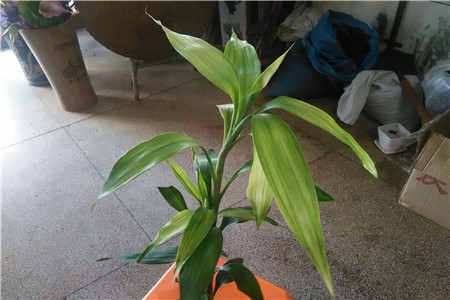
二、繁殖方法
1、土培:在春季时剪20-25厘米的嫩茎,然后用高锰酸钾泡30分钟左右,等晾干之后就可以插到盆土中了,每天浇1次水,一个月左右,它就能生根。
2、水培:剪取分生带茎尖的分支,将四周的叶子剪掉插入水中,将温度控制在25℃,15天就会生根。
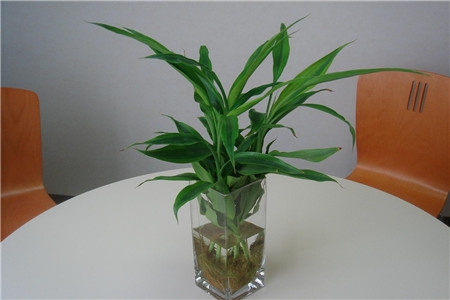
三、常见病虫害
主要的病虫害有叶斑病、炭疽病、叶螨、介壳虫等,出现虫害后可以人工捕捉,当出现病害时可以用百菌清或甲基托布津交替喷洒,间隔为5-7天喷洒一次。
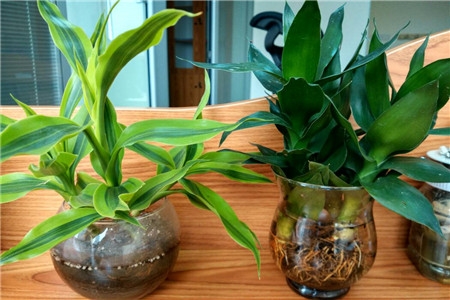
2
3
文章
Miss Chen
2018年05月23日

Description: This herbaceous perennial plant is 1–2½' tall and usually erect. It is unbranched or branched sparingly. The terete central stem and any lateral stems are mostly pale green to pale reddish green, hairless to densely pubescent, and somewhat swollen at the bases of leaves, where it is sometimes reddish purple. The lowermost and uppermost leaves are usually opposite, while the middle leaves occur in whorls of 4. They are up to 4" long and 1½" across, elliptic or lanceolate in shape, smooth along the margins, and sessile. The upper surface of each leaf is yellowish green, greyish green, or medium green, and hairless, while the lower leaf surface is more pale and hairless to finely pubescent. The central stem terminates in a panicle of flowers up to 8" long and about 3-4" across. On robust plants, 1-2 additional panicles may be produced from upper lateral stems. Pairs of small leafy bracts occur wherever a panicle branches. The erect central stalk, ascending branches, and clustered pedicels of the panicle are pale to medium green, terete, and hairless to finely pubescent. The flowers occur individually or in groups of 2-3 at the tips of long lateral branches on short pedicels. These pedicels are less than ¼" long.
Each flower is about ¾" across, consisting of 5 white fringed petals, a light green calyx that is bell-shaped (campanulate) with 5 broad teeth along its upper rim, a pistil with 3 slender white styles, and 10 stamens with slender white filaments. Each fringed petal has 8-12 linear lobes along its broad outer edge, while at the base it becomes quite narrow. The outer surface of each calyx is light green and hairless to finely pubescent; it often has faint longitudinal veins that are a darker shade of green. The blooming period occurs during mid- to late summer, lasting about 3-4 weeks. There is no noticeable floral scent. The flowers remain open during the evening, night, and early morning. In the presence of bright sunlight, they have a tendency to close-up during the middle of the day. Each flower is replaced by an ovoid seed capsule with 6 teeth along its upper rim; each capsule contains several seeds. The flattened seeds are reniform or reniform-orbicular with a fine pebbly surface. The root system consists of a deep white taproot. An older plant may tiller from its base, sending up multiple stems from the same taproot. Starry Campion reproduces by reseeding itself.

Cultivation: The preference is light shade or partial sun, mesic to dry conditions, and soil containing loam, clay-loam, or a little rocky material. When exposed to full sunlight, the leaves become yellowish green and they are less attractive. Sometimes the stems lean sideways when this plant is grown in the fertile soil of flower gardens.
Range & Habitat: The native Starry Campion is widely distributed in Illinois, where it occurs occasionally in most counties (see Distribution Map). There are two varieties of Starry Campion that can be found throughout the state, Silene stellata stellata and Silene stellata scabrella. The typical variety of this species is hairless (or nearly so), while var. scabrella is quite pubescent, as indicated above. Habitats include upland rocky woodlands, wooded slopes, savannas, shaded banks of rivers, meadows near wooded areas, and cemetery prairies. This conservative species is usually found in higher quality natural areas. Fire and other kinds of disturbance are beneficial if they reduce dense shade from Acer saccharum (Sugar Maple) and invasive shrubs.

Faunal Associations: The flowers are pollinated primarily by moths and, to a lesser extent, by bumblebees. These insects suck nectar from the flowers. The caterpillars of a rare Noctuid moth, Hadena ectypa (Campion Coronet), feed primarily on the flowers and developing seed capsules of Starry Campion. This moth also sucks nectar from the flowers of this plant (Nelson, 2012). The caterpillars of a closely related moth, Hadena capsularis (Capsule Moth), feed on the flowers and developing seed capules of several species in the Pink family, including Silene spp. The caterpillars of this latter moth may also feed on Starry Campion. Another insect, Aphis sambuci (Elder Aphid), uses Silene spp. as summer hosts and feeds on the sap of their roots. Among vertebrate animals, White-tailed Deer occasionally chomp off the tops of Starry Campion (personal observation), even though its foliage, like other Silene spp., probably contains some saponins and alkaloids that are known to be at least mildly toxic.

Photographic Location: The wildflower garden at the apartment complex of the webmaster in Urbana, Illinois. The plants in the photographs are the pubescent variety of Starry Campion, or Silene stellata scabrella.
Comments: The flowers of Starry Campion are quite beautiful. It should be grown more often in flower gardens. This species is easy to identity because of its deeply fringed petals and whorled leaves. Other white-flowered Silene spp. (campions) lack deeply fringed petals and their leaves always occur in opposite pairs. While the flowers of Starry Campion are perfect (bisexual), the flowers of some campions are dioecious (individual plants have either all male flowers or all female flowers, but not both). An example of a dioecious species in this genus is the introduced Silene pratensis (Evening Campion).
Each flower is about ¾" across, consisting of 5 white fringed petals, a light green calyx that is bell-shaped (campanulate) with 5 broad teeth along its upper rim, a pistil with 3 slender white styles, and 10 stamens with slender white filaments. Each fringed petal has 8-12 linear lobes along its broad outer edge, while at the base it becomes quite narrow. The outer surface of each calyx is light green and hairless to finely pubescent; it often has faint longitudinal veins that are a darker shade of green. The blooming period occurs during mid- to late summer, lasting about 3-4 weeks. There is no noticeable floral scent. The flowers remain open during the evening, night, and early morning. In the presence of bright sunlight, they have a tendency to close-up during the middle of the day. Each flower is replaced by an ovoid seed capsule with 6 teeth along its upper rim; each capsule contains several seeds. The flattened seeds are reniform or reniform-orbicular with a fine pebbly surface. The root system consists of a deep white taproot. An older plant may tiller from its base, sending up multiple stems from the same taproot. Starry Campion reproduces by reseeding itself.

Cultivation: The preference is light shade or partial sun, mesic to dry conditions, and soil containing loam, clay-loam, or a little rocky material. When exposed to full sunlight, the leaves become yellowish green and they are less attractive. Sometimes the stems lean sideways when this plant is grown in the fertile soil of flower gardens.
Range & Habitat: The native Starry Campion is widely distributed in Illinois, where it occurs occasionally in most counties (see Distribution Map). There are two varieties of Starry Campion that can be found throughout the state, Silene stellata stellata and Silene stellata scabrella. The typical variety of this species is hairless (or nearly so), while var. scabrella is quite pubescent, as indicated above. Habitats include upland rocky woodlands, wooded slopes, savannas, shaded banks of rivers, meadows near wooded areas, and cemetery prairies. This conservative species is usually found in higher quality natural areas. Fire and other kinds of disturbance are beneficial if they reduce dense shade from Acer saccharum (Sugar Maple) and invasive shrubs.

Faunal Associations: The flowers are pollinated primarily by moths and, to a lesser extent, by bumblebees. These insects suck nectar from the flowers. The caterpillars of a rare Noctuid moth, Hadena ectypa (Campion Coronet), feed primarily on the flowers and developing seed capsules of Starry Campion. This moth also sucks nectar from the flowers of this plant (Nelson, 2012). The caterpillars of a closely related moth, Hadena capsularis (Capsule Moth), feed on the flowers and developing seed capules of several species in the Pink family, including Silene spp. The caterpillars of this latter moth may also feed on Starry Campion. Another insect, Aphis sambuci (Elder Aphid), uses Silene spp. as summer hosts and feeds on the sap of their roots. Among vertebrate animals, White-tailed Deer occasionally chomp off the tops of Starry Campion (personal observation), even though its foliage, like other Silene spp., probably contains some saponins and alkaloids that are known to be at least mildly toxic.

Photographic Location: The wildflower garden at the apartment complex of the webmaster in Urbana, Illinois. The plants in the photographs are the pubescent variety of Starry Campion, or Silene stellata scabrella.
Comments: The flowers of Starry Campion are quite beautiful. It should be grown more often in flower gardens. This species is easy to identity because of its deeply fringed petals and whorled leaves. Other white-flowered Silene spp. (campions) lack deeply fringed petals and their leaves always occur in opposite pairs. While the flowers of Starry Campion are perfect (bisexual), the flowers of some campions are dioecious (individual plants have either all male flowers or all female flowers, but not both). An example of a dioecious species in this genus is the introduced Silene pratensis (Evening Campion).
0
0
文章
权问薇
2018年05月23日


1、养殖环境
(1)土壤:主要要求是营养多、疏松透气、排水性等。可选择将腐叶土和园土混合。
(2)光照:植株喜光,需提供充足阳光,特别是成长期。在夏季,有时也需适当遮光。
(3)浇水:成长期要保持土壤湿润,但不积水。秋冬季减少浇水。
(4)湿度:夏季需得通过喷洒水等方式来增大湿度。
(5)施肥:主要需要的阶段是成长期。一般每半个月左右施加一次液肥就可满足要求。注意浓度别太高。

2、繁殖方法
(1)扦插繁殖:其为最主要的一个方法。在二月份前后进行。选择十到十五厘米左右的、健壮的,最好是老桩。将大概三分之一叶子剪掉,并把底部剪成一个斜口。基质最好是河沙,大概五到七厘米。将枝条插入,浇透水。注意进行遮荫,或将植株放在阴凉的地方。
(2)除了扦插法,常用的方法还有分株法、压条法等。
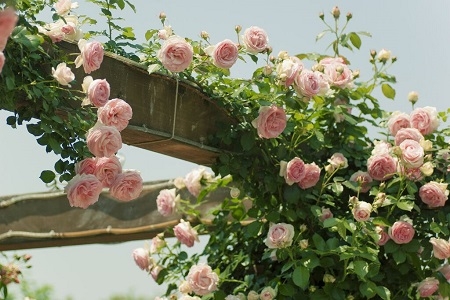
3、病害防治
植株病害多发,主要由真菌引起。将病叶子剪掉之后,可喷洒波尔多液。
4、修剪
植株萌芽成长能力强,所以需及时修剪,特别是在闷热、潮湿的环境下。还有开花过后,也需要进行一次修剪。

0
3
荣耀:学习了…
文章
权问薇
2018年05月23日


一、养殖环境
1、土壤:它对土壤并没有太高的要求,即使在贫瘠的土壤也能生长,不过它最喜欢疏松、保水性好的土壤。
2、施肥:在它生长旺期间隔15-20天追肥一次,如果是盆栽或者容器养殖,那就要适量减少施肥。
3、浇水:它喜欢在湿润的环境中生长,夏季要及时浇水,提高空气中的湿度,冬季盆土要保持微微干燥,不要有积水以免导致烂根。
4、温度:铜钱草在10-25℃的温度中会更好的生长,它喜欢温暖且潮湿的生长环境,但是不耐寒,冬季最低温度不能低于5℃,夏季最高温度不能高于32℃,若温度较高它就会进入到休眠状态,停止生长。

二、繁殖方法
分株繁殖:将带有2个节的根放在清水浸泡2天,有节的地方就会长出根须,将根放到培养土上,盖上一层土再放些碎石子,浇水要没过碎石子,大概4-5天就会长出小株。要经常给它补水,一般以水能浸湿碎石子最佳。
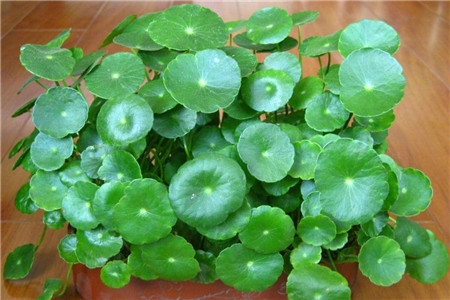
三、常见病虫害
铜钱草病虫害一般发生较少,它生长及适应能力很强,不用做特别护理,若是生长密集就要修剪并加强通风透气,以免植株黄化。
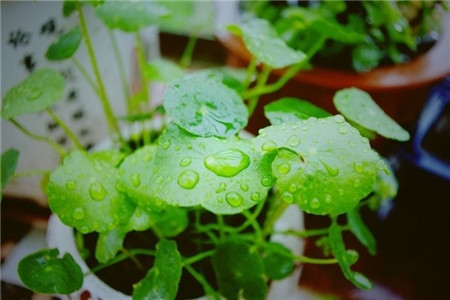
1
4
文章
权问薇
2018年05月23日

静夜:夏必死!
说起夏必死的多肉,花花第一个肯定要说静夜了!不少花友都感慨,买了死死了买,完全进入了一个无限循环中!

度夏攻略:
1、换盆换土
在夏季到来之前,最好给静夜换一次盆,换成透水透气的陶盆,盆土的话,用椰糠、珍珠岩按照1: 1的比例混合,然后再加入几粒复合肥,度夏完全无压力。
2、勤通风少浇水
最好将静夜放在北阳台的阴凉通风处,下雨前必须赶紧拿回屋子;连续晴天的话,可以7-10天浇1次水,如果连续有阴雨天,立刻停止浇水。
白牡丹:黑腐妹
养肉肉的花友,都流传着一句话,白牡丹被称为黑腐妹,足可以看出它是多么难以度夏的品种了!

度夏攻略:
1、勤通风少浇水
白牡丹黑腐,基本都是病菌造成的,特别是浇过水后,通风条件又差,那就是妥妥的黑腐啊!将白牡丹放在阴凉通风的北阳台或室内,一定得管住自己的手,少浇水!
2、砍头扦插:
一旦发现黑腐,那就赶紧将黑腐的植株挖出来,砍头后保留上部健康部分,剩下的直接丢掉,因为已经不可能恢复了。等晾干伤口后重新上盆发根。
山地玫瑰:一浇水就挂!
山地玫瑰虽然夏季休眠,但是花花觉得这应该是它最好看的时候了,可是万一管不住自己的手,一浇水指定就挂了!
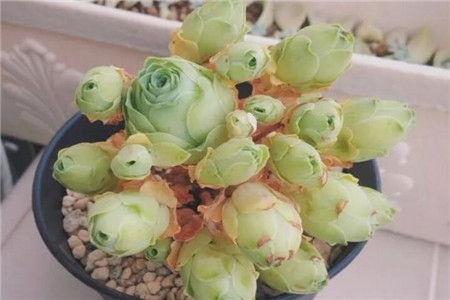
度夏攻略:
1、注意通风
度夏必须通风。白天可以放在打开的北阳台或窗台上,晚上放在室内空调房里,或是直接给它吹个风扇。
2、遮阴断水
山地玫瑰夏季不要直射太阳,从春末开始逐渐减少浇水量,可采用快速浸盆法,将花盆在水中浸一下直接拿出来,保证盆土土壤有潮气即可。温度持续在25℃以上,直接断水。
玉蝶:黑腐王!
每次一提起玉蝶,花花这心里都要咯噔一下!听说在南方地区,玉蝶也被称为夏必死!不少花友可是怨念非常深:秋天入手养的美美哒,夏天死了,第二年秋天继续买…

度夏攻略:
1、田园土长得旺
养玉蝶千万不能娇贵,越是不管越是长得好,养玉蝶的土壤,最好使用田园土,不需要配置专门土壤,才能越长越旺,安温度夏!
2、加强通风
玉蝶容易群生,如果不通风,浇水后很容易导致底部不通风,潮湿闷热是最容易造成黑腐的。所以夏季必须要将玉蝶放在窗台边通风的地方,不然就拿个小风扇吹一吹也行。摸到叶片发软了再浇水就行。
小红衣:度夏就死!
若是说起夏必死的排行榜,花花觉得小红衣绝对能排的上前三名了!感觉小红衣完全就是莫名其妙,明明前一天还是好好的,结果第二天立马就死翘翘了,说都了都是泪啊!
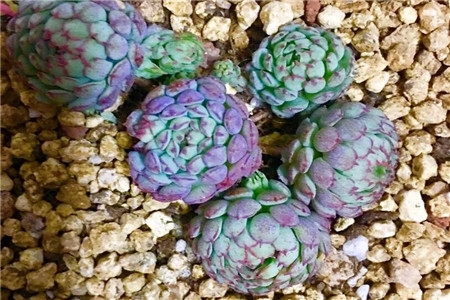
度夏攻略:
1、必须通风
闷热的环境很容易导致小红衣黑腐死掉,所以夏天一定要注意通风!不管是开着窗户,还是给小红衣吹风扇,都必须要保证通风!
2、少浇水
夏季如果盆内积水,再加上闷热,那小红衣就像是蒸桑拿一样,肯定死翘翘了!可以选择每天傍晚朝着植株喷水,保证盆土略微湿润即可。
瑞典魔男:化水王!
每次一提起魔男,花花就想起了每年夏天被它支配的恐惧!这魔男简直是太容易化水了,稍微不注意,完全就化水死了!
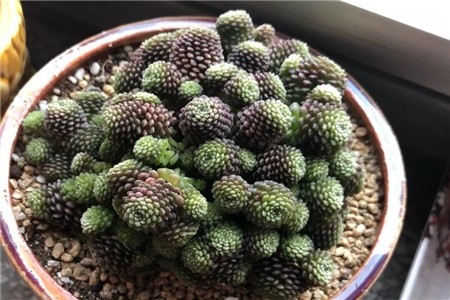
度夏攻略:
1、注意降温
魔男超级怕热,特别是现在夏天温度能达到35-40℃,稍不注意魔男整个注意就化水了。夏天必须要注意降温,将魔男放在窗边通风的地方,或是搬到空调房,甚至是吹风扇降温,都是可以的。
2、避免暴晒
魔男怕热,夏天绝对不能晒太阳,可以放在室内通风的地方,接受散射光,等到度夏结束后,再拿到太阳底下晒一晒即可。
霜之朝:黑腐病!
之前花花完全不觉得霜之朝难度夏,不过后来很多花友都跟花花反映,花花决定来写一写它了!

度夏攻略:
1、通风遮阳
夏季太阳毒,一定要保证遮阳,在南阳台养护的可以拉个双层遮阳网,有条件的放在北阳台养护最好!
2、少浇水
如果你家的霜之朝一碰就掉叶子,那肯定是因为水较多了。进入夏季后,霜之朝会进入休眠期,此时一定要减少浇水,每个月2-3次即可,浇水沿着盆边慢慢来,保证植株不干枯即可。
初恋:掉叶子!
最后一个夏必死的名额,花花给了初恋!它实在是太容易黑腐了,搞得花花直接丢在院子里,完全不想管了!

度夏攻略:
1、遮阴通风
想要初恋安稳度夏,夏季必须要遮阴。可以给多肉打个遮阳伞,或是拉上遮阳网,一定要放在南北通风的地方,避免黑腐。
2、管住手少浇水!
夏季如果气温特别高,初恋会进入短暂休眠期,此时必须管住自己的手,让盆土处在略微偏干的状态,千万别浇水多,否则你的初恋肯定分分钟死翘翘了!
说起夏必死的多肉,花花第一个肯定要说静夜了!不少花友都感慨,买了死死了买,完全进入了一个无限循环中!

度夏攻略:
1、换盆换土
在夏季到来之前,最好给静夜换一次盆,换成透水透气的陶盆,盆土的话,用椰糠、珍珠岩按照1: 1的比例混合,然后再加入几粒复合肥,度夏完全无压力。
2、勤通风少浇水
最好将静夜放在北阳台的阴凉通风处,下雨前必须赶紧拿回屋子;连续晴天的话,可以7-10天浇1次水,如果连续有阴雨天,立刻停止浇水。
白牡丹:黑腐妹
养肉肉的花友,都流传着一句话,白牡丹被称为黑腐妹,足可以看出它是多么难以度夏的品种了!

度夏攻略:
1、勤通风少浇水
白牡丹黑腐,基本都是病菌造成的,特别是浇过水后,通风条件又差,那就是妥妥的黑腐啊!将白牡丹放在阴凉通风的北阳台或室内,一定得管住自己的手,少浇水!
2、砍头扦插:
一旦发现黑腐,那就赶紧将黑腐的植株挖出来,砍头后保留上部健康部分,剩下的直接丢掉,因为已经不可能恢复了。等晾干伤口后重新上盆发根。
山地玫瑰:一浇水就挂!
山地玫瑰虽然夏季休眠,但是花花觉得这应该是它最好看的时候了,可是万一管不住自己的手,一浇水指定就挂了!

度夏攻略:
1、注意通风
度夏必须通风。白天可以放在打开的北阳台或窗台上,晚上放在室内空调房里,或是直接给它吹个风扇。
2、遮阴断水
山地玫瑰夏季不要直射太阳,从春末开始逐渐减少浇水量,可采用快速浸盆法,将花盆在水中浸一下直接拿出来,保证盆土土壤有潮气即可。温度持续在25℃以上,直接断水。
玉蝶:黑腐王!
每次一提起玉蝶,花花这心里都要咯噔一下!听说在南方地区,玉蝶也被称为夏必死!不少花友可是怨念非常深:秋天入手养的美美哒,夏天死了,第二年秋天继续买…

度夏攻略:
1、田园土长得旺
养玉蝶千万不能娇贵,越是不管越是长得好,养玉蝶的土壤,最好使用田园土,不需要配置专门土壤,才能越长越旺,安温度夏!
2、加强通风
玉蝶容易群生,如果不通风,浇水后很容易导致底部不通风,潮湿闷热是最容易造成黑腐的。所以夏季必须要将玉蝶放在窗台边通风的地方,不然就拿个小风扇吹一吹也行。摸到叶片发软了再浇水就行。
小红衣:度夏就死!
若是说起夏必死的排行榜,花花觉得小红衣绝对能排的上前三名了!感觉小红衣完全就是莫名其妙,明明前一天还是好好的,结果第二天立马就死翘翘了,说都了都是泪啊!

度夏攻略:
1、必须通风
闷热的环境很容易导致小红衣黑腐死掉,所以夏天一定要注意通风!不管是开着窗户,还是给小红衣吹风扇,都必须要保证通风!
2、少浇水
夏季如果盆内积水,再加上闷热,那小红衣就像是蒸桑拿一样,肯定死翘翘了!可以选择每天傍晚朝着植株喷水,保证盆土略微湿润即可。
瑞典魔男:化水王!
每次一提起魔男,花花就想起了每年夏天被它支配的恐惧!这魔男简直是太容易化水了,稍微不注意,完全就化水死了!

度夏攻略:
1、注意降温
魔男超级怕热,特别是现在夏天温度能达到35-40℃,稍不注意魔男整个注意就化水了。夏天必须要注意降温,将魔男放在窗边通风的地方,或是搬到空调房,甚至是吹风扇降温,都是可以的。
2、避免暴晒
魔男怕热,夏天绝对不能晒太阳,可以放在室内通风的地方,接受散射光,等到度夏结束后,再拿到太阳底下晒一晒即可。
霜之朝:黑腐病!
之前花花完全不觉得霜之朝难度夏,不过后来很多花友都跟花花反映,花花决定来写一写它了!

度夏攻略:
1、通风遮阳
夏季太阳毒,一定要保证遮阳,在南阳台养护的可以拉个双层遮阳网,有条件的放在北阳台养护最好!
2、少浇水
如果你家的霜之朝一碰就掉叶子,那肯定是因为水较多了。进入夏季后,霜之朝会进入休眠期,此时一定要减少浇水,每个月2-3次即可,浇水沿着盆边慢慢来,保证植株不干枯即可。
初恋:掉叶子!
最后一个夏必死的名额,花花给了初恋!它实在是太容易黑腐了,搞得花花直接丢在院子里,完全不想管了!

度夏攻略:
1、遮阴通风
想要初恋安稳度夏,夏季必须要遮阴。可以给多肉打个遮阳伞,或是拉上遮阳网,一定要放在南北通风的地方,避免黑腐。
2、管住手少浇水!
夏季如果气温特别高,初恋会进入短暂休眠期,此时必须管住自己的手,让盆土处在略微偏干的状态,千万别浇水多,否则你的初恋肯定分分钟死翘翘了!
0
3
文章
Miss Chen
2018年05月22日

Description: This wildflower consists of a rosette of basal leaves and a flowering stalk about 1-3' tall. Individual basal leaves are up to 9" long and 3" across; they are oblong to ovate-oblong, crenate or smooth along their margins, and medium green. Basal leaves are glabrous to sparsely hairy on their upper surfaces, while their lower surfaces are sparsely to moderately hairy. Generally, young leaves are more hairy than older leaves. The inflorescence consists of a panicle of flowers, which develops from an erect central stalk. This stalk is fairly stout, terete, and densely covered with spreading hairs. The panicle is ellipsoid in shape, ½–1½' long, and about 1/3 as much across when it is fully extended. The branches of the panicle are ascending to spreading and usually pubescent. There is a single linear-lanceolate bract at each major fork of the branches. Depending on the size of the inflorescence, the flowers vary in abundance; they usually bloom at about the same time. Each flower is ¼" across, consisting of 5 narrow white petals, 5 green sepals that are joined together at the base, 10 stamens with white to orange-brown anthers, and 2 prominent pistils that are green and joined together. The sepals are triangular in shape and become recurved when the flowers bloom. The petals are longer than the sepals. The blooming period occurs during the late spring for 2-3 weeks. Each flower is replaced by a pair of beaked follicles; each follicle splits open along one side to release its seeds. The root system consists of a crown of fleshy fibrous roots and rhizomes. Clonal offsets from the rhizomes are often formed.
Cultivation: The preference is light shade to partial sun, consistently moist conditions, high humidity, and thin rocky soil containing sandstone. The site should be protected from prevailing winds.
Range & Habitat: The native Forbe's Saxifrage is found in southern Illinois (where it is uncommon) and 3 counties in northern Illinois, where it is rare; it is absent from the remaining areas of the state (see Distribution Map). This map excludes the distribution of the more common typical variety, Saxifraga pensylvanica pensylvanica (Swamp Saxifrage). Habitats are largely restricted to the lower slopes of rocky bluffs (usually north-facing), moist ledges along sandstone ravines, and the lower slopes of sandstone canyons, particularly where some seepage of moisture occurs. These habitats are always found in wooded areas with varying amounts of shade. Forbe's Saxifrage is restricted to high quality natural areas.
Faunal Associations: The flowers are cross-pollinated primarily by small bees, wasps, and various flies. Less common visitors include sawflies and beetles. These insects usually suck nectar, although some of the bees also collect pollen, while some flies and beetles prefer to feed on the pollen. These observations are from Graenicher.
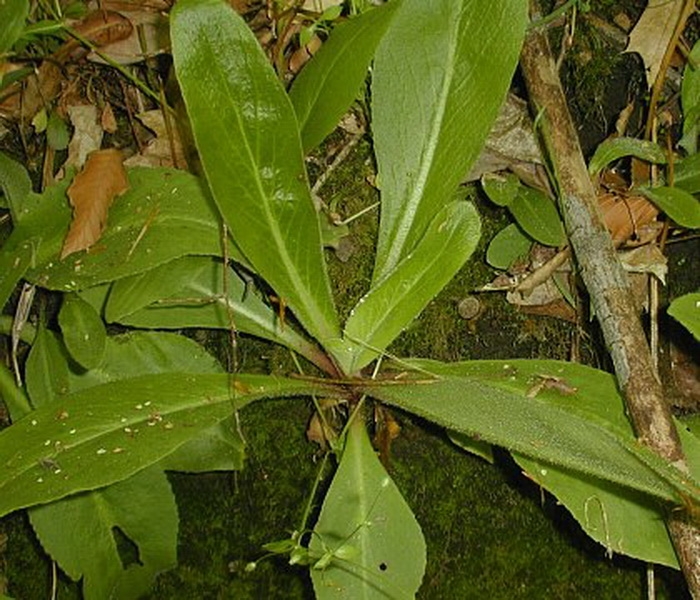
Photographic Location: Lower slope of a sandstone canyon at the Portland Arch in west-central Indiana.
Comments: I have selected Vasey's taxonomic classification of Forbe's Saxifrage. This is something of a compromise. Some botanists in Illinois and Indiana (e.g., Mohlenbrock, 2002) classify Forbe's Saxifrage as a separate species, Saxifraga forbesii, rather than a variety of Saxifraga pensylvanica (Swamp Saxifrage). Other botanists don't recognize Forbe's Saxifrage at even the varietal level. Generally, Forbe's Saxifrage is supposed to have hairier basal leaves than Swamp Saxifrage, and the petals of its flowers are longer than the sepals. Swamp Saxifrage is supposed to have slightly smaller flowers, where the petals are about the same length as the sepals. Swamp Saxifrage is found primarily in the northern half of Illinois, where it is found in both sunny and shaded wetlands. The only other Saxifrage in Illinois is Saxifraga virginiensis (Early Saxifrage), which has been found only in Hardin County. This latter species is much smaller in size; it prefers drier upland areas and can bloom as early as mid-spring.
Cultivation: The preference is light shade to partial sun, consistently moist conditions, high humidity, and thin rocky soil containing sandstone. The site should be protected from prevailing winds.
Range & Habitat: The native Forbe's Saxifrage is found in southern Illinois (where it is uncommon) and 3 counties in northern Illinois, where it is rare; it is absent from the remaining areas of the state (see Distribution Map). This map excludes the distribution of the more common typical variety, Saxifraga pensylvanica pensylvanica (Swamp Saxifrage). Habitats are largely restricted to the lower slopes of rocky bluffs (usually north-facing), moist ledges along sandstone ravines, and the lower slopes of sandstone canyons, particularly where some seepage of moisture occurs. These habitats are always found in wooded areas with varying amounts of shade. Forbe's Saxifrage is restricted to high quality natural areas.
Faunal Associations: The flowers are cross-pollinated primarily by small bees, wasps, and various flies. Less common visitors include sawflies and beetles. These insects usually suck nectar, although some of the bees also collect pollen, while some flies and beetles prefer to feed on the pollen. These observations are from Graenicher.

Photographic Location: Lower slope of a sandstone canyon at the Portland Arch in west-central Indiana.
Comments: I have selected Vasey's taxonomic classification of Forbe's Saxifrage. This is something of a compromise. Some botanists in Illinois and Indiana (e.g., Mohlenbrock, 2002) classify Forbe's Saxifrage as a separate species, Saxifraga forbesii, rather than a variety of Saxifraga pensylvanica (Swamp Saxifrage). Other botanists don't recognize Forbe's Saxifrage at even the varietal level. Generally, Forbe's Saxifrage is supposed to have hairier basal leaves than Swamp Saxifrage, and the petals of its flowers are longer than the sepals. Swamp Saxifrage is supposed to have slightly smaller flowers, where the petals are about the same length as the sepals. Swamp Saxifrage is found primarily in the northern half of Illinois, where it is found in both sunny and shaded wetlands. The only other Saxifrage in Illinois is Saxifraga virginiensis (Early Saxifrage), which has been found only in Hardin County. This latter species is much smaller in size; it prefers drier upland areas and can bloom as early as mid-spring.
0
0
文章
Miss Chen
2018年05月22日

Description: This herbaceous perennial plant is 1–2½' tall, branching occasionally. The stems are light green to pale red or purple, glabrous, and veined. The leaves are alternate, opposite, or basal. The basal and lower leaves are palmately divided into 5 leaflets; these compound leaves span up to 5" long and across, and their petioles are up to 6" long. The middle to upper leaves are trifoliate with 3 leaflets; they are smaller in size and usually sessile. The leaflets are up to 2½" long and 1" across; they are oblanceolate, elliptic, obovate, or ovate in shape. Each leaflet is shallowly cleft and coarsely serrated along the margins; the bottom of each leaflet is wedge-shaped and sessile. Both the leaves and their petioles (if any) are glabrous.
Each upper stem terminates in 1-5 umbels of flowers. Each umbel is globoid or semi-globoid and spans up to ½" across; it consists of 20-60 tiny flowers and their pedicels. The stalk (or ray) of each umbel is up to 1" long. Each umbel has 1-3 perfect flowers (male & female reproductive organs), while the remaining flowers are staminate (male only). Whether perfect or staminate, each flower has a short green calyx with 5 ovate teeth, 5 greenish yellow petals that are obcordate in shape, and 5 exerted stamens with conspicuous anthers. The anthers are initially yellow, but they later become brown. In addition, each perfect flower has a bristly globoid ovary and a pair of long recurved styles. These styles are longer than the bristles of the ovary. The blooming period occurs from late spring to mid-summer and lasts about 2-3 weeks. Each bur-like fruit contains a pair of seeds. The root system is fibrous. Colonies often develop in favorable habitats.
Cultivation: This plant is typically found in partial sun to medium shade, moist to slightly dry conditions, and fertile loamy soil. While the flowers are not very showy, it can be used as a ground cover in shaded areas.
Range & Habitat: Common Black Snakeroot is occasional to common in most areas of Illinois (see Distribution Map), where it is native. Habitats include deciduous woodlands, areas along woodland paths, thickets, shaded seeps, and fence rows that are overgrown with woody vegetation. Sometimes this species invades shaded areas of gardens. Tolerance to degradation of woodland habitat is above average.

Faunal Associations: The nectar and pollen of the flowers attract small bees (Halictid & Andrenid) and various flies. White-Tailed Deer and other mammalian herbivores avoid consumption of the foliage because of its bitter taste. The small prickly fruits can cling to the fur of mammals, feathers of birds, and clothing of humans; this helps to distribute the seeds to new locations.
Photographic Location: A mesic area of Busey Woods in Urbana, Illinois.
Comments: Common Black Snakeroot can be distinguished from other Sanicula spp. (Black Snakeroots) by its greenish yellow flowers. Other Black Snakeroots have greenish white flowers. The recurved styles of Common Black Snakeroot are longer than the prickles of the ovary, while other Black Snakeroots have more erect styles that are shorter or the same length as the prickles of their ovaries. The common name (Black Snakeroot) probably refers to the pioneer belief that the bitter roots were useful in treating snake bites, although this is highly doubtful. Another scientific name of Common Black Snakeroot is Sanicula gregaria, which resulted in the common name, 'Clustered Black Snakeroot.'
Each upper stem terminates in 1-5 umbels of flowers. Each umbel is globoid or semi-globoid and spans up to ½" across; it consists of 20-60 tiny flowers and their pedicels. The stalk (or ray) of each umbel is up to 1" long. Each umbel has 1-3 perfect flowers (male & female reproductive organs), while the remaining flowers are staminate (male only). Whether perfect or staminate, each flower has a short green calyx with 5 ovate teeth, 5 greenish yellow petals that are obcordate in shape, and 5 exerted stamens with conspicuous anthers. The anthers are initially yellow, but they later become brown. In addition, each perfect flower has a bristly globoid ovary and a pair of long recurved styles. These styles are longer than the bristles of the ovary. The blooming period occurs from late spring to mid-summer and lasts about 2-3 weeks. Each bur-like fruit contains a pair of seeds. The root system is fibrous. Colonies often develop in favorable habitats.
Cultivation: This plant is typically found in partial sun to medium shade, moist to slightly dry conditions, and fertile loamy soil. While the flowers are not very showy, it can be used as a ground cover in shaded areas.
Range & Habitat: Common Black Snakeroot is occasional to common in most areas of Illinois (see Distribution Map), where it is native. Habitats include deciduous woodlands, areas along woodland paths, thickets, shaded seeps, and fence rows that are overgrown with woody vegetation. Sometimes this species invades shaded areas of gardens. Tolerance to degradation of woodland habitat is above average.

Faunal Associations: The nectar and pollen of the flowers attract small bees (Halictid & Andrenid) and various flies. White-Tailed Deer and other mammalian herbivores avoid consumption of the foliage because of its bitter taste. The small prickly fruits can cling to the fur of mammals, feathers of birds, and clothing of humans; this helps to distribute the seeds to new locations.
Photographic Location: A mesic area of Busey Woods in Urbana, Illinois.
Comments: Common Black Snakeroot can be distinguished from other Sanicula spp. (Black Snakeroots) by its greenish yellow flowers. Other Black Snakeroots have greenish white flowers. The recurved styles of Common Black Snakeroot are longer than the prickles of the ovary, while other Black Snakeroots have more erect styles that are shorter or the same length as the prickles of their ovaries. The common name (Black Snakeroot) probably refers to the pioneer belief that the bitter roots were useful in treating snake bites, although this is highly doubtful. Another scientific name of Common Black Snakeroot is Sanicula gregaria, which resulted in the common name, 'Clustered Black Snakeroot.'
0
0
文章
Miss Chen
2018年05月22日

Description: This herbaceous plant is a biennial or short-lived perennial; it is about 1-2' tall, branching occasionally. The stems are glabrous and light green; they are terete or somewhat angular. The alternate leaves are usually trifoliate, although some of the smaller upper leaves are simple. The lower leaves often appear to be palmate with 5 leaflets, but this is because each lateral leaflet has been deeply divided into 2 large lobes. In outline, the lower compound leaves are nearly orbicular in outline (up to 5" wide and 5" across, excluding the petioles) while the upper compound leaves are more narrow. The leaflets and large lobes are obovate, ovate, or broadly elliptic in shape, while their margins are coarsely double-serrated and sometimes cleft along their margins. Leaf venation within each leaflet and lobe is pinnate. The upper leaf surface is yellowish green (in bright sunlight) to dark green (in shade) and glabrous. The lower leaves have long petioles, while those of the upper leaves are much shorter. These petioles are light green, glabrous, and slightly sheathed at their bases; they are grooved above and convex below.
The upper stems terminate in small umbels or compound umbels of greenish white flowers. Each umbel consists of 1-4 umbellets and spans up to 2½" across. Each umbellet has 2-3 pistillate or perfect flowers and about 2-6 staminate flowers (less often, there will be 7-15 staminate flowers); these flowers form a tight cluster that is irregularly globular in shape. The perfect and pistillate flowers are more conspicous because of their bur-like ovaries. These ovaries are about 3-5 mm. in length, globoid-ovoid in shape, and green; their outer surfaces are covered with hooked prickles (about 1 mm. in length). Each flower has 5 greenish white petals and a green calyx with 5 linear-lanceolate lobes; these lobes are shorter than the prickles of the ovaries. The styles of perfect and pistillate flowers (less than 1 mm. in length) are also shorter than the prickles of the ovaries. Each staminate or perfect flower has 5 short stamens.

The blooming period occurs from late spring to mid-summer and lasts about 3 weeks for a colony of plants. There is no noticeable floral scent. Each bur-like fruit contains 2 seeds. The root system is fibrous. This plant spreads by reseeding itself and it occasionally forms colonies.
Cultivation: The preference is light to medium shade, moist to slightly dry conditions, and a loamy soil with an abundance of organic matter.
Range & Habitat: Canadian Black Snakeroot is a common plant that occurs in nearly all counties of Illinois (see Distribution Map), where it is native. Habitats include mesic deciduous woodlands, north-facing bluffs, areas along woodland paths, edges of shaded seeps, fence rows with woody vegetation, edges of yards underneath trees, and flower gardens in shady areas. This plant occurs in both natural habitats of varying quality and disturbed areas.

Faunal Associations: The flowers attract few insect pollinators, although occasionally they are visited by Halictid bees (Lasioglossum spp.), masked bees (Hylaeus spp.), and Syrphid flies, which suck nectar. An aphid, Aphis clydesmithi, sucks plant juices at the stem base and root collar, while another aphid, Aphis saniculae, sucks plant juices from the undersides of the leaves. Canadian Black Snakeroot is the preferred host plant of the latter aphid. The bitter foliage is avoided by grazing livestock and probably other mammalian herbivores as well. The small burry fruits cling readily to the feathers of birds, fur of mammals, and clothing of humans; this helps to distribute the seeds far and wide.
Photographic Location: Underneath a lawn tree in Urbana, Illinois.

Comments: Canadian Black Snakeroot is not very showy, in part because it does not bloom until after the deciduous trees in woodlands have developed their leaves. Except for the bur-like ovaries, the flowers are inconspicuous. This species is well-adapted to the shady conditions that exist underneath trees during the summer, and it can become a minor weed along the edges of yards and in flower gardens. Except for Sanicula gregaria (Clustered Black Snakeroot), which has greenish yellow flowers, the various Sanicula spp. in Illinois have small greenish white flowers. The species of this latter group are rather difficult to distinguish. Canadian Black Snakeroot differs from Sanicula marilandica (Maryland Black Snakeroot) by its short styles, which are no longer than the prickles of its ovaries; the latter species has pairs of curved styles that are much longer than the prickles of its ovaries. Canadian Black Snakeroot differs from Sanicula trifoliata (Large-Fruited Black Snakeroot) by the size and shape of its burry fruits: The fruits of the former species are 3-5 mm. long and ovoid-globoid in shape, while the fruits of the latter species are at least 5.5 mm. in length and ovoid in shape. Furthermore, the calyx lobes of the latter species are as long or longer than the surrounding prickles, and its stamens are longer and more conspicuous than those Canadian Black Snakeroot.
The upper stems terminate in small umbels or compound umbels of greenish white flowers. Each umbel consists of 1-4 umbellets and spans up to 2½" across. Each umbellet has 2-3 pistillate or perfect flowers and about 2-6 staminate flowers (less often, there will be 7-15 staminate flowers); these flowers form a tight cluster that is irregularly globular in shape. The perfect and pistillate flowers are more conspicous because of their bur-like ovaries. These ovaries are about 3-5 mm. in length, globoid-ovoid in shape, and green; their outer surfaces are covered with hooked prickles (about 1 mm. in length). Each flower has 5 greenish white petals and a green calyx with 5 linear-lanceolate lobes; these lobes are shorter than the prickles of the ovaries. The styles of perfect and pistillate flowers (less than 1 mm. in length) are also shorter than the prickles of the ovaries. Each staminate or perfect flower has 5 short stamens.

The blooming period occurs from late spring to mid-summer and lasts about 3 weeks for a colony of plants. There is no noticeable floral scent. Each bur-like fruit contains 2 seeds. The root system is fibrous. This plant spreads by reseeding itself and it occasionally forms colonies.
Cultivation: The preference is light to medium shade, moist to slightly dry conditions, and a loamy soil with an abundance of organic matter.
Range & Habitat: Canadian Black Snakeroot is a common plant that occurs in nearly all counties of Illinois (see Distribution Map), where it is native. Habitats include mesic deciduous woodlands, north-facing bluffs, areas along woodland paths, edges of shaded seeps, fence rows with woody vegetation, edges of yards underneath trees, and flower gardens in shady areas. This plant occurs in both natural habitats of varying quality and disturbed areas.

Faunal Associations: The flowers attract few insect pollinators, although occasionally they are visited by Halictid bees (Lasioglossum spp.), masked bees (Hylaeus spp.), and Syrphid flies, which suck nectar. An aphid, Aphis clydesmithi, sucks plant juices at the stem base and root collar, while another aphid, Aphis saniculae, sucks plant juices from the undersides of the leaves. Canadian Black Snakeroot is the preferred host plant of the latter aphid. The bitter foliage is avoided by grazing livestock and probably other mammalian herbivores as well. The small burry fruits cling readily to the feathers of birds, fur of mammals, and clothing of humans; this helps to distribute the seeds far and wide.
Photographic Location: Underneath a lawn tree in Urbana, Illinois.

Comments: Canadian Black Snakeroot is not very showy, in part because it does not bloom until after the deciduous trees in woodlands have developed their leaves. Except for the bur-like ovaries, the flowers are inconspicuous. This species is well-adapted to the shady conditions that exist underneath trees during the summer, and it can become a minor weed along the edges of yards and in flower gardens. Except for Sanicula gregaria (Clustered Black Snakeroot), which has greenish yellow flowers, the various Sanicula spp. in Illinois have small greenish white flowers. The species of this latter group are rather difficult to distinguish. Canadian Black Snakeroot differs from Sanicula marilandica (Maryland Black Snakeroot) by its short styles, which are no longer than the prickles of its ovaries; the latter species has pairs of curved styles that are much longer than the prickles of its ovaries. Canadian Black Snakeroot differs from Sanicula trifoliata (Large-Fruited Black Snakeroot) by the size and shape of its burry fruits: The fruits of the former species are 3-5 mm. long and ovoid-globoid in shape, while the fruits of the latter species are at least 5.5 mm. in length and ovoid in shape. Furthermore, the calyx lobes of the latter species are as long or longer than the surrounding prickles, and its stamens are longer and more conspicuous than those Canadian Black Snakeroot.
0
0



